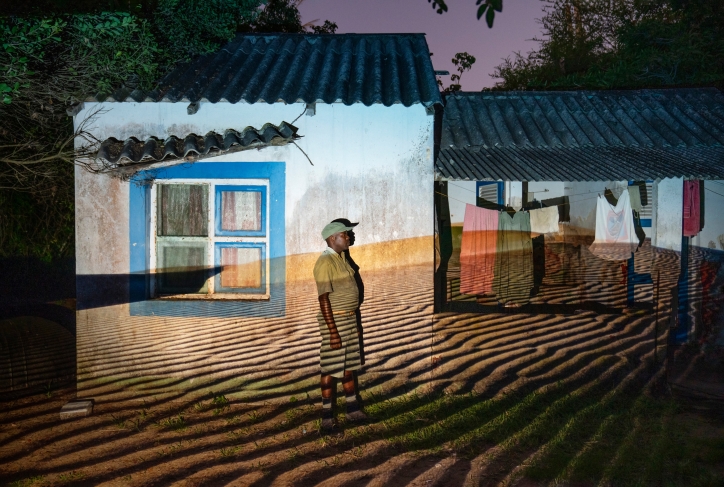Atlas of the New World




Edoardo Delille, Giulia Piermartiri. Mozambique. Inhaca Island. 2022. Courtesy of the authors-
Edoardo Delille, Giulia Piermartiri. Maldives. Maafushi, Kaafu Atoll. 2019. Courtesy of the authors.
Edoardo Delille, Giulia Piermartiri. Mozambique. Inhaca Island. 2022. Courtesy of the authors
Edoardo Delille, Giulia Piermartiri. USA. California 2022. Courtesy of the authors.
Moscow, 13.04.2024—22.09.2024
exhibition is over
Share with friends
For the press
EDOARDO DELILLE, GIULIA PIERMARTIRI
ATLAS OF THE NEW WORLD
Curator: Olga Daniele
Due to climate change, some of the most radical transformations on the world map will only be visible after a few decades. These questions led us to the idea for the ‘Atlas of the New World’ project. Photography is a medium that usually depicts the present. Our idea, however, was to find a way to show the future in relation to the world we live in today. Following climate data from the United Nations, we went to photograph how some places will look at the end of the century. With a special slide projector, we physically projected onto the landscape the image of its possible transformation. The result appears as complex and dreamlike photographs that become a metaphorical projection of the not too distant future.
MALDIVES
The Maldives, with an average of just half a meter above the sea level, hold the record of the lowest country in the world.
MOZAMBIQUE
Despite contributing only 5% of pollutant emissions, Africa is the continent that pays the highest price for climate change. Mozambique, in particular, especially along its almost 2.500 km coastline, is one of the most climate vulnerable countries.
Droughts, flood and sudden storm are episode that now alternate and repeat themselves every year, affecting and destroying entire villages and compromising the agricultural harvest. Mangrooves, key allies again coastal erosion, are cut down or poorly managed, and so the effects of rising sea level grow year after year, increasing the risk of flooding and salinization of the land.
CALIFORNIA
Record-breaking temperatures, mega-fire and dry rivers threaten to end the ‘California dream’.
Drought on the West coast of the United States is nothing new. The desert of Nevada and California are popular tourist destinations, but climate change is expanding this phenomenon to those places now famous for world’s largest redwood forest. This is evidenced by data from the ‘US drought monitor’, the federal service, which report that 88% of California is currently in extreme drought.
If greenhouse gas emissions continue to increase, the temperature will have risen by 8°c by 2100. The frequency of extreme wildfires will increase accordingly, and the average area burned will reach 77% of California.
CHINA
The Yangtze, the third longest river in the world, is the birthplace of thousands of years of Chinese civilisation. The fertile areas around its course provide much of the country's food resources and some of the energy needed to supply the large cities along it. These include Shanghai, Wuhan, Nanjing and Chongqing, the most populated city in the world. The rivers have always been a symbol of its prosperity and ancient traditions. In recent years, however, cities close to waterways are increasingly suffering the consequences of ongoing climate change. Increased rainfall and sudden torrential downpours have caused floods and inundations to hit these areas hard. The destructive power of the floods has highlighted the clash between the greatness of nature and the vulnerability of human communities. The flooding of the Yangtze River in mega-cities such as Chongqing and adjacent areas has caused mass evacuations, claimed thousands of lives and displaced millions.




